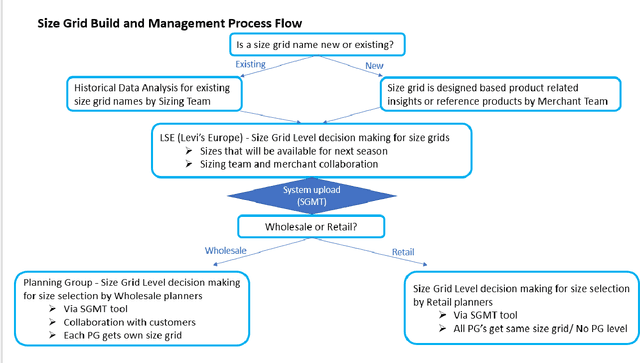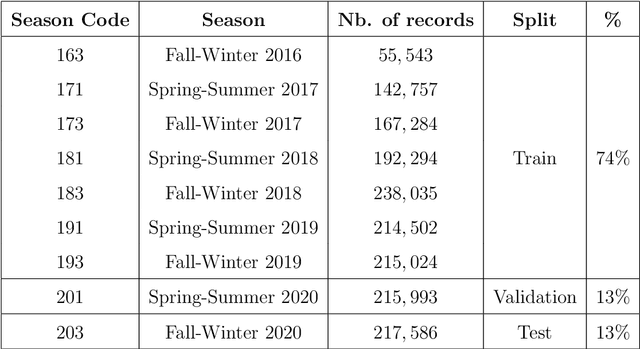Dries Benoit
Using Machine Learning Methods for Automation of Size Grid Building and Management
Jun 16, 2023



Abstract:Fashion apparel companies require planning for the next season, a year in advance for supply chain management. This study focuses on size selection decision making for Levi Strauss. Currently, the region and planning group level size grids are built and managed manually. The company suffers from the workload it creates for sizing, merchant and planning teams. This research is aiming to answer two research questions: "Which sizes should be available to the planners under each size grid name for the next season(s)?" and "Which sizes should be adopted for each planning group for the next season(s)?". We approach to the problem with a classification model, which is one of the popular models used in machine learning. With this research, a more automated process was created by using machine learning techniques. A decrease in workload of the teams in the company is expected after it is put into practice. Unlike many studies in the state of art for fashion and apparel industry, this study focuses on sizes where the stock keeping unit represents a product with a certain size.
Defining a synthetic data generator for realistic electric vehicle charging sessions
Feb 28, 2022
Abstract:Electric vehicle (EV) charging stations have become prominent in electricity grids in the past years. Analysis of EV charging sessions is useful for flexibility analysis, load balancing, offering incentives to customers, etc. Yet, the limited availability of such EV sessions data hinders further development in these fields. Addressing this need for publicly available and realistic data, we develop a synthetic data generator (SDG) for EV charging sessions. Our SDG assumes the EV inter-arrival time to follow an exponential distribution. Departure times are modeled by defining a conditional probability density function (pdf) for connection times. This pdf for connection time and required energy is fitted by Gaussian mixture models. Since we train our SDG using a large real-world dataset, its output is realistic.
 Add to Chrome
Add to Chrome Add to Firefox
Add to Firefox Add to Edge
Add to Edge